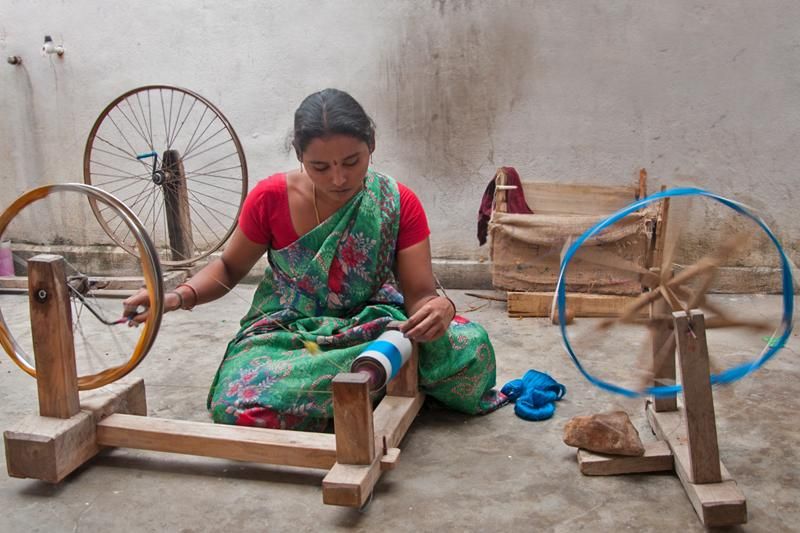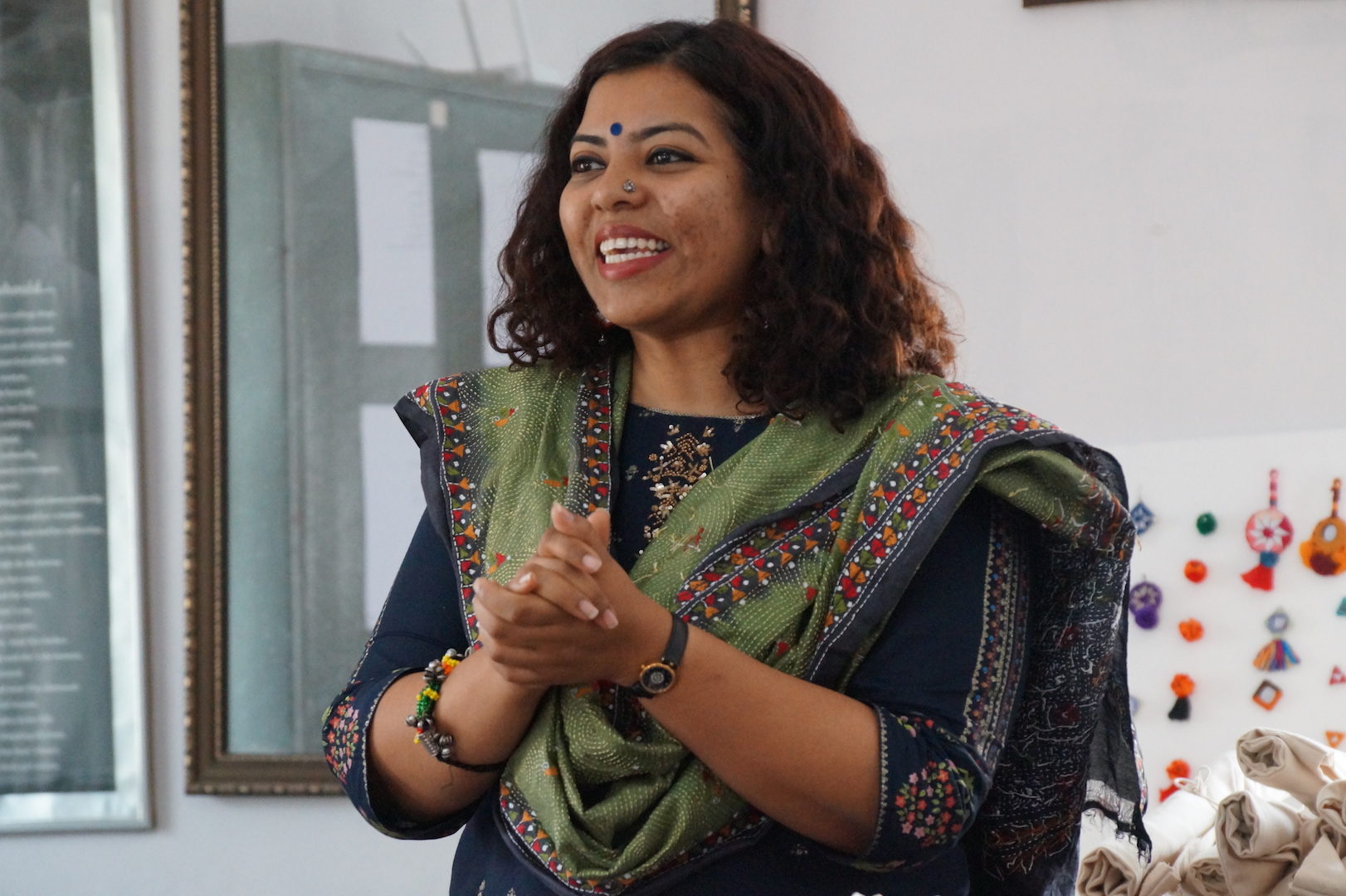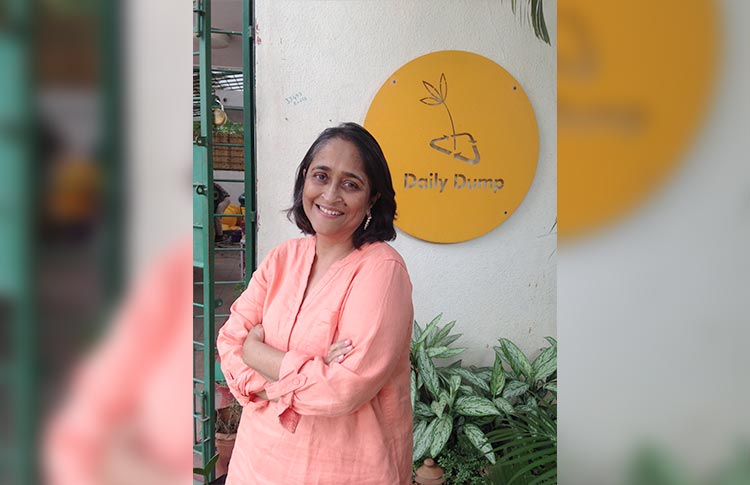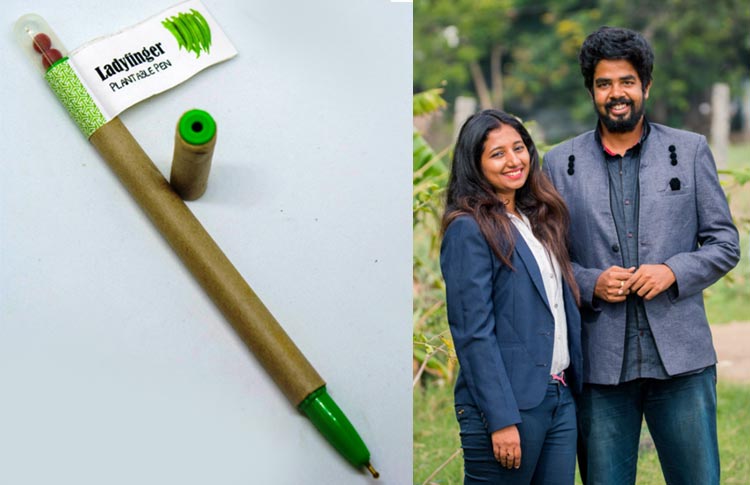Gaytri Bhatia Listens To The Soil & Ploughs Her Instincts At Her Farm
- IWB Post
- November 13, 2018

Many Indians dream of settling in a foreign land being attracted to the seemingly comfortable living there. For Gaytri Bhatia, the “perfect lifestyle,” as she calls it, couldn’t fade away the “saundhi khushboo” of her motherland from her memory.
Born and brought up in Mumbai, Gaytri went to the States to pursue Environmental Studies. After completing her course, she also joined the Environmental Protection Agency to gather practical and on-the-field experience.
“You can have and get a “perfect lifestyle” abroad. Yet, somehow, after “having it all,” I wasn’t at peace. It was like my land was calling me to come back. And, so I did!” Gaytri told me over the phone, and I could imagine the pride on her face as it clearly reflected in her voice.
Gaytri got rather an experimental upbringing from her parents and was a free soul who loved swimming in oceans (Yes, OCEANS!), and became trekking instructor for school children before going to the States to study. And, with a passion for giving it back to nature, she took up farming.
“I have always been connected with the elements of the Mother Earth. I have interacted with nature, the animals, the cattle, the chickens, the rivers, and the ocean. I have spent time observing and understanding the interaction of things with their surrounding things. Living in a natural system is what I know and think that’s how it should be for everyone!” she exclaimed.
So, after coming back to India, she returned to her family-owned farm, Vrindavan Farm, in Wada, Maharashtra from where her journey as a farmer and environmentalist began.
When I asked her to describe herself as the New Age farmer, she laughed and said, “I don’t think I’m a New Age farmer. In fact, I am the total opposite of it. The new age farmers are adopting modern methods like Aquaponics, etc., and their main aim is to maximize the output through any which way.”
“A lot of farming techniques and methods that I’m using are actually ancient. We believe in slow farming practices which intend to understand what the land needs and not vice-versa. So, I’ll call myself just a farmer!” she added.
Gaytri discussed how initially, she just watched and observed the farmers’ way of doing things.
“I had no experience in farming and I needed to understand the basics. I observed very closely as to how things work,” she said.
Talking about the difference in her techniques and that of the modern farmers, she explained to me in great details of how her agricultural practices are in tune with the nature and the forest.
“I observed that the interaction amongst the plants is so important. Nowadays, farmers are being encouraged to take up monoculture as it ensures high yield and volume output. But, it is disrupting the natural balance of the land. I saw how banana and chikoo grow together and in fact help each other to grow better. So, instead of monoculture, we need to promote Bio-diverse culture, companion cropping, and Inter-cropping.”
“We are keeping the wild grass and not removing it like most others do. And, as far as nourishing the soil is concerned, we do not use chemicals. We use cow dung, cow urine, other waste food, and harvest, etc., and ferment it to make natural compost for the soil. Another important thing while farming is to be in synchronization with the season. We grow that food which the land can give in the particular season and not what we want the land to grow. Also, synchronization with the moon cycle is crucial but most of the farmers today neglect it due to lack of knowledge. The moon cycle impacts the water present in the soil to a great extent,” added Gaytri.
Trying to grasp everything she said, she tried to make it simpler for me by saying, “We just have to be patient and let the earth do its work. It’s like the cycle of nature is completing on its own. Because if we meddle and force-feed the earth with chemical fertilizers and change the natural course of the land, then it might generate higher output in the short term but it’s making the land weak in the long term. It’s exactly like taking antibiotics for a long term which make our body’s immune system weak in the long run.”
“Now, I understood it all, perfectly!” I sighed. “So why do the modern farmers use such unnatural practices? Is it the lack of knowledge or the pressure to maximize output?” I enquired.
“I think it’s the lack of knowledge. There’s no education that’s gone in it to make the farmers understand the consequences of their actions. If you look at the current educational system of the farming colleges, you’ll observe that all of them are directed towards encouraging farmers to grow maximum and to grow faster, which is very wrong and harmful for nature. Similarly, they are advised to use chemical fertilizers and are taught how a little amount of these chemicals can magically increase the output. So, it’s not the fault of the farmers, they are being misled by others,” she said.
Gaytri’s team of farmers mostly comprises of the Adivasis and it influenced her lifestyle and choices in a large way.
“Living in the city makes a person so detached and disconnected to the earth and mother nature. Adivasis way of life is attuned to nature and forest completely. For example, if an urban man comes to a village, the first thing he would want is to build a pukka road. But, the Adivasis or the villagers would not want the same and will carve out a natural road in between the forest without cutting down the trees, etc. They know that when the monsoon will come, the rainwater will get collected, distributed, and seeped in by these same routes,” she said.
With the goal to spread her experience and to replicate her farm model in other areas, she told me that the greatest benefit of her working model is that it reduced the financial requirement drastically thereby helping farmers to operate at a very low cost.
“For the farmers, it’s the arrangement of inputs that’s the biggest challenge. Our whole model is based on self-sustainability which cuts down on their need for finances,” advocated Gaytri.
Me: And, how do you ensure the water conservation?
Gaytri: Most of our farming practices are towards water retention. We make hill steps so the water doesn’t rush by the land. The practice aims at making ‘Running water walk, standing water sit, and still water sink.’ As I said earlier that we do not remove the wild grass and let it stay on the land, well it also helps in holding the water. Also, we do not water the farm daytime as most of it will get evaporated due to excessive heat.
Me: Mostly, the men are the land owners. But, do you think, if women could inherit the land, it would benefit the farming culture in some way?
Gaytri: In historic India, women were the ones who were handling the land and were the agriculturers of India. If you see now also, women are the ones who are tending to the land. But, yes, the decision-making authorities are with the men, and I think it is because of this very reason the culture of fast-growing came in. Men are the breadwinners for the family and think in terms of earnings and profits. On the other hand, women by nature have a capacity to nurture and so I think they should come back at the forefront.
Me: So true! Did you face any challenges as a woman farmer?
Gaytri: Yes! In my area, not many people are used to seeing a woman being a decision-maker. I had to earn the respect and the trust of the people!
Me: How can we encourage the youth to take up Agricultural Entrepreneurship?
Gaytri: The first step has to be, closing the gap. Urban kids are so used to going to the supermarket and just stocking up the packaged food that they do not even know what the raw grains, ingredients, etc. look like. We need to take them to the fields and show them how farmers grow food. Or better, we need to start growing food in our homes in little pots just to make them understand the effort that goes in. Plant seeds and let your kids nurture it and tend to it. When they see the amount of hard work that goes in for just a seed to grow into a fruit, they’ll respect the food. Then, they’ll be able to question other things and will try to solve the issues surrounding them.
In 2015, Gaytri went to the Slow Food convention in Milan, where she spoke about her farm’s workable model.
Me: Your biggest learning at the Slow Food Convention?
Gaytri: When you are at the farm, sometimes you get this feeling that you are the only one doing something for the environment or the society. But, when I attended the convention and saw that two-thousand other people are doing such extraordinary work with the same intention as yours, that’s the biggest learning. It’s overwhelming to learn that so many people are working towards a common cause and that they are just solidly growing.
Me: So, what’s currently growing on your farm?
Gaytri: It is summer so majorly Mango Orchards! We also have Heirloom tomatoes, Moringa, and some indigenous flowers growing. But, majorly Mangoes!
Mangoes!!! *drooling*
Me: Give some tips on seasonal eating.
Gaytri: First, we need to know what the seasonal is! Like in Mumbai, most people do not even know that Palak only grows in winter as all around the year they have Palak Paneer. After knowing which vegetable and fruit grow when the next step is to revert the knowledge. The major issue is that we want to make our food as fancy as possible and we need to step back from this practice. The current market has trained us this way and so need to unlearn a lot of things to learn the natural and traditional way of eating.
Me: What are your meals made of?
Gaytri: Whatever is growing on my farm! Berries, fruits, milk, milk products like Paneer, Dahi, etc. The only idea is to not go out and look for food and to eat whatever the land has to offer us!
This article was first published in April 2017.
- 0
- 0












